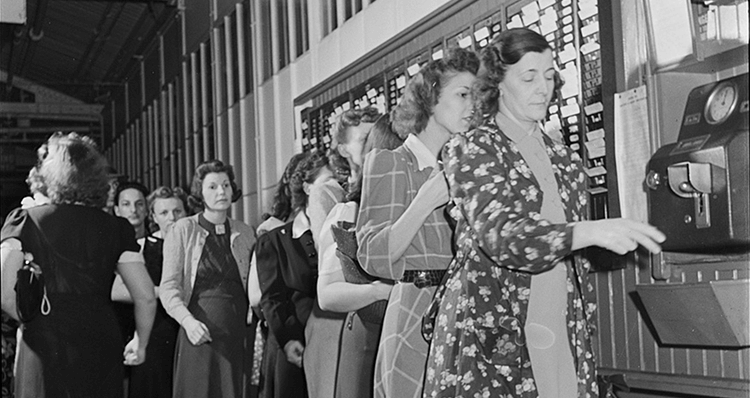It's About Time...
History Of Time And Attendance Systems

The Industrial Revolution
The Industrial Revolution brought major changes to the economies of Europe and the United States. New technological advances in the early 1800s ushered in sweeping changes for both manufacturing and transportation. Traditional family farms and small family run cottage industries produced goods in small quantities with lots of manual labor. With the arrival of machine based manufacturing, entire families began moving from their rural farm homes to the cities to find work in the newly industrialized factories. Children often worked right alongside their parents when the family needed extra income. The work was often dangerous, unhealthy, and paid very little. Factory owners loved child labor because it was cheap and unregulated. However, it wasn't long before the government stepped in to help improve factory conditions and regulate how many hours people were made to work, especially children. Factory owners needed a way to keep track of worker hours. This gave rise to the first time and attendance systems.
The First Time Clock
When the first employee time clock was invented in the late 1800s, its purpose was to record the time an employee entered and left the factory. This mechanical employee time clock would stamp day and time information on a thick paper card, hence the name 'time card'. This first time card gave the factory owner an actual record of the hours worked by each employee. This protected the business owner by making sure employees worked the number of hours they claimed, and protected employees by making it much more difficult for employers to cheat them out of their wages.

Time and attendance systems continued to advance with smaller electrical time clocks eventually replacing the large mechanical ones. Time cards also evolved to have special areas marked on them for clocking in and out, so workers had to carefully line up the time card in just the right place. When commercial time clock software first made its appearance in the 1990s, businesses started moving away from mechanical and electrical time clocks that were subject to failure and expensive to replace or repair. Time clock software allowed business owners to enjoy the benefits of reduced payroll processing costs by making it quick and easy to go directly from time clock to paycheck with increased efficiency while eliminating buddy punching.
Today's Time Clock Software
As computers have become more sophisticated, so have time and attendance systems. Absence management is far easier to monitor when vacation, sick days, and holidays can be automatically tracked and accrued. Complex overtime rules are easier to manage and unauthorized overtime easier to control. Modern time and attendance software systems take advantage of today's sophisticated networking protocols to link time clock computers together so employees can be monitored in real-time while maintaining the time card data in a secure and centralized location. Integration with online payroll systems saves time and eliminates data entry errors. The benefits of modern time and attendance systems are virtually endless.
Even though time and attendance systems have greatly reduced the amount of time needed to prepare time cards for payroll processing, it still protects business owners and employees for the same reasons as that very first punch clock.
Virtual TimeClock Software
At Redcort Software, time and attendance software with best-in-class customer support has been our focus for thirty years. Virtual TimeClock continues to help thousands of employers leave paper time cards behind and save time and money. Don't pay monthly for a time clock service, Virtual TimeClock is a one-time software purchase that you own forever. No strings attached. Check out hundreds of user reviews >
To get started with your free, fully-functional trial visit our Free Trial page today, no credit card required. Complete pricing can be found on our pricing page.